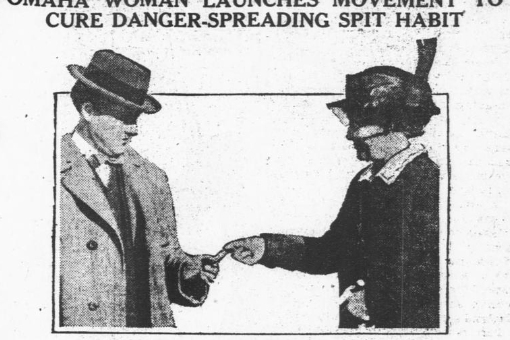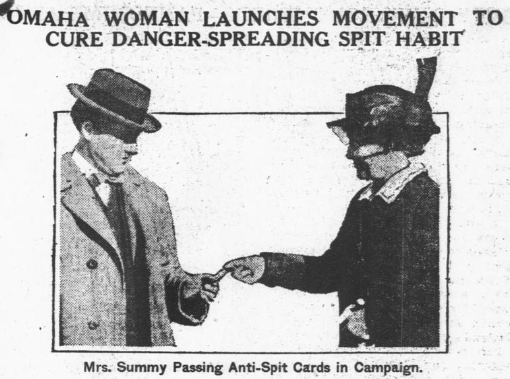
The early 1900s saw the start of the anti-spitting campaign, and for good reason. Not only did the dark tobacco spit stain the hems of women’s dresses and get dragged into homes after a person stepped on the spit, but it also helped with the spread of the white plague, tuberculosis.
By 1905, people began calling for anti-spitting ordinances in their hometowns in an effort to stop the spread of TB. While there was talk of imposing fines, some people wanted spitters arrested. Many policemen were against this idea because they themselves were spitters and confessed that they were having problems breaking the dirty habit.
Meanwhile, some people made fun of the new anti-spit campaigns popping up across the U.S. In Cairo, Illinois, an ordinance was passed to prevent spitting in public. Immediately afterwards, a local jokester made a sign that read: “Don’t spit on our dirty streets.” Surrounding the sign were piles of street trash raked up in front of homes and businesses. The city had passed an anti-spitting law, but still failed to have any sort of trash collection service.

Ten years later, in 1915, a Tennessee newspaper was still complaining about the “nasty puddles of tobacco juice” left behind by “chronic spitters.” Ladies were asked to get involved in stopping their menfolk from “promiscuous” spitting on public sidewalks.
By 1916, the people of Washington, D.C. were demanding that anti-spitting laws be enforced. With fears concerning an increase in death from disease, fines for spitting were set anywhere from $1 to $40.
In Omaha, Nebraska, one woman had anti-spit cards printed up and she passed them out to anyone seen spitting in public. The city also put up billboards warning about the dangers of spitting. Eventually, hospital nurses and school children got in the act of helping people break the spitting habit.
It took a few decades, but eventually spitting became viewed as a bad habit in the United States. Newspapers credited the change in behavior due to community involvement and disease awareness campaigns.

